Optional preferential voting
Optional preferential voting
In a local government election for a single member divided council, and when voting for the mayor in all councils, you have the choice to vote for one, some or all candidates on the ballot paper; this is optional preferential voting (OPV).
OPV is the voting system used in Queensland to elect:
- Mayors in local government elections
- Councillors in local governments where single-member wards or divisions exist (single-member divided councils).
You can check which councils use optional preferential voting here.
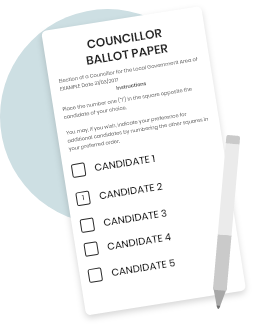
To cast a formal vote:
OPV requires an elector to mark the ballot paper to indicate their preference. Electors can choose to “vote for one, vote for some, or vote for all” candidates on the ballot paper.
Your preference order won't be automatically allocated; only you can decide where your preferences go. If the candidates you vote for are eliminated from the count, your vote will be exhausted.
Vote one
Vote for only one candidate by placing a one (1), tick or cross in the square opposite the name of your preferred candidate.
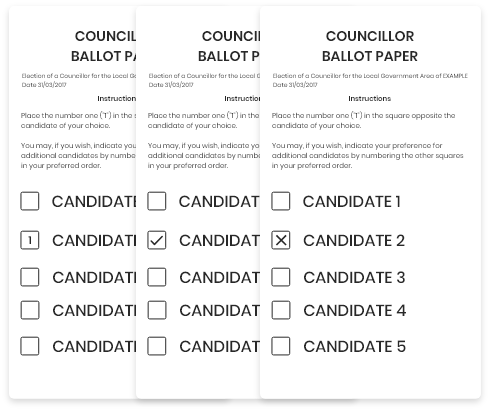
Vote for some or all
Vote for some or all by placing a one (1) in the box of your preferred candidate. You can then number some or all of remaining boxes in order of your preference according to the instructions on the ballot paper.
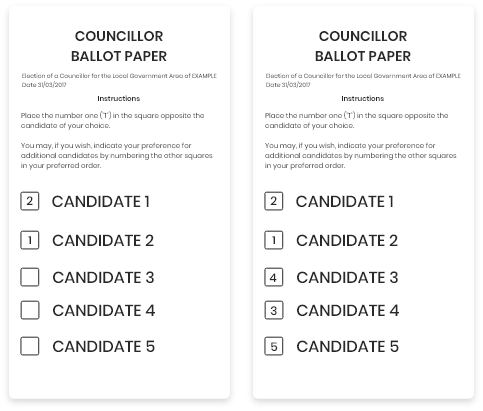
Counting the votes
The first step is to check each ballot paper is formal.
This means at least one first preference must be marked for a candidate.
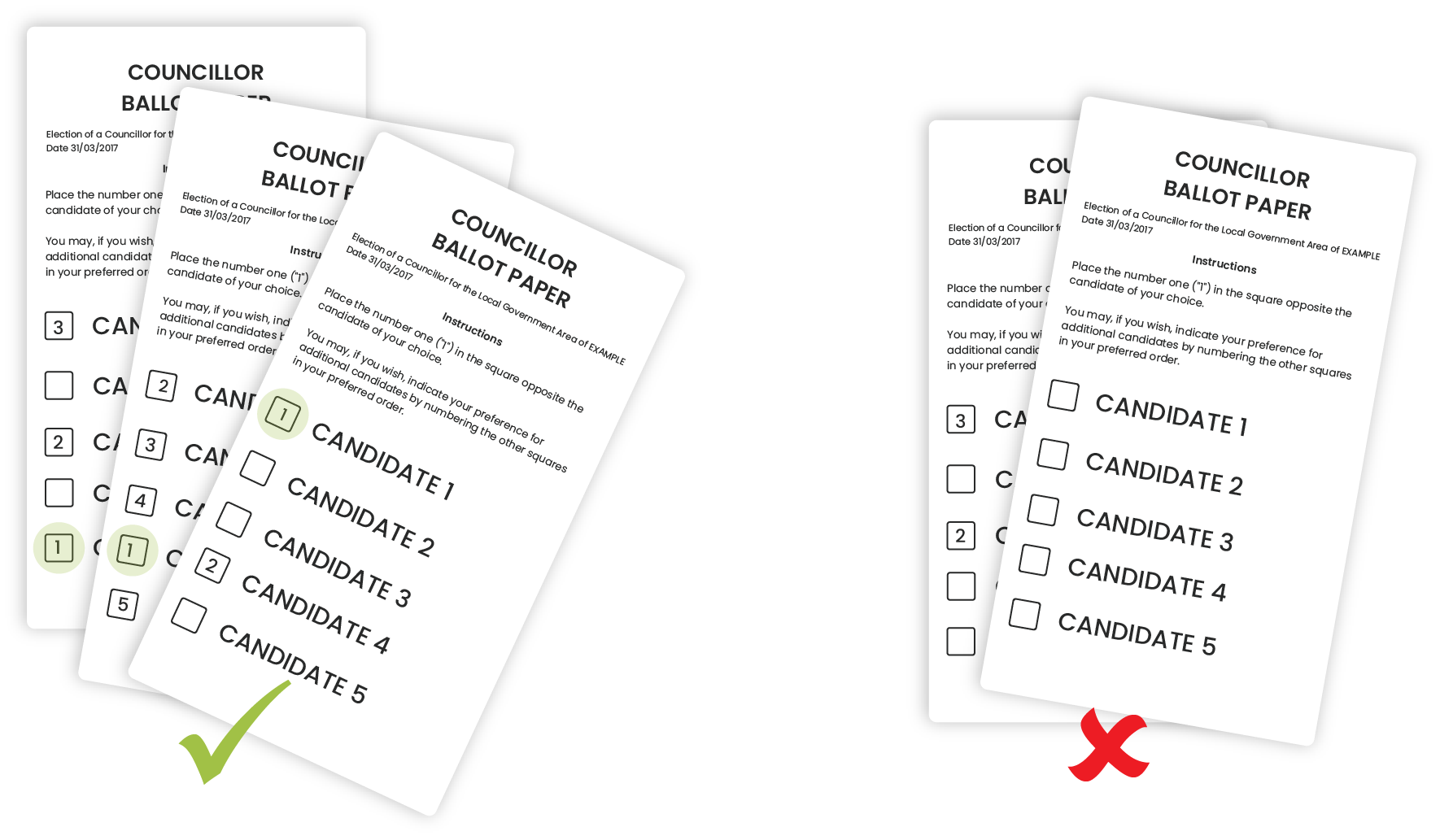
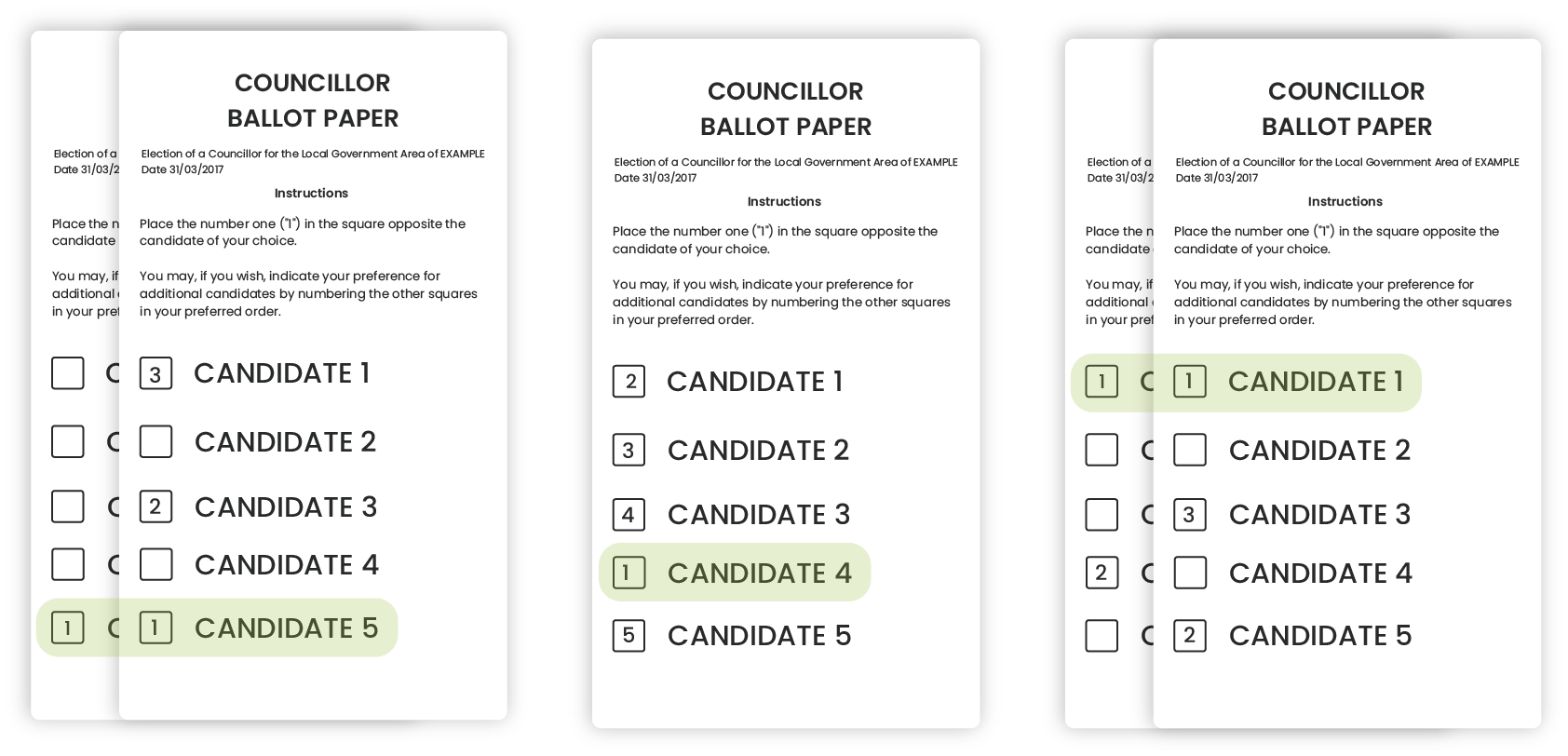
Then polling officials count the first preferences by looking for the numeral 1 (or other first preference mark) next to a candidate’s name on the ballot paper.
The vote is then allocated to that person.
The total number of first preference votes for each candidate is then tallied.
Next, the candidate with the lowest number of first preference votes overall is excluded from the count.
In the example below, that's 2 votes.
The voters’ second preferences on those ballot papers (if there are any) are allocated to the remaining candidates.
If there are no more preference marks for any of the remaining candidates, the ballot paper becomes ‘exhausted’ and has no further part in the count.

Now, the next candidate with the lowest number of votes overall is excluded.
In the example here, that's 6 votes.
The voters’ preferences (if any) are distributed to the remaining candidates. The exclusion process continues until just two candidates remain.

Once the result is clear, when no other outcome is mathematically possible, the ECQ declares the successful candidate.
